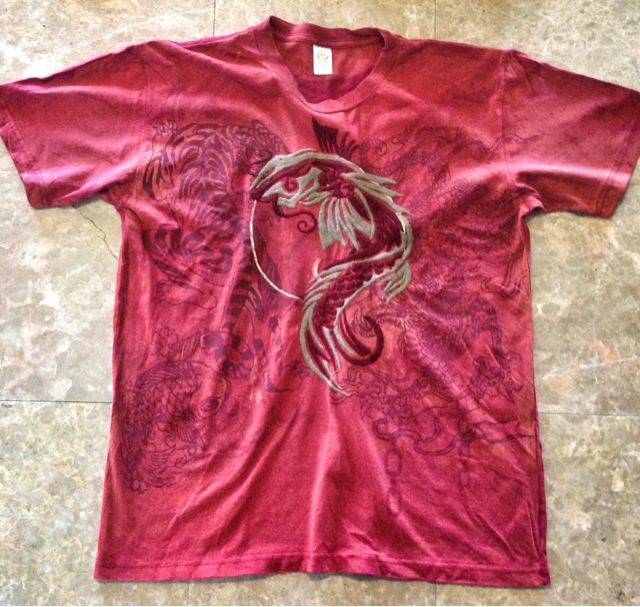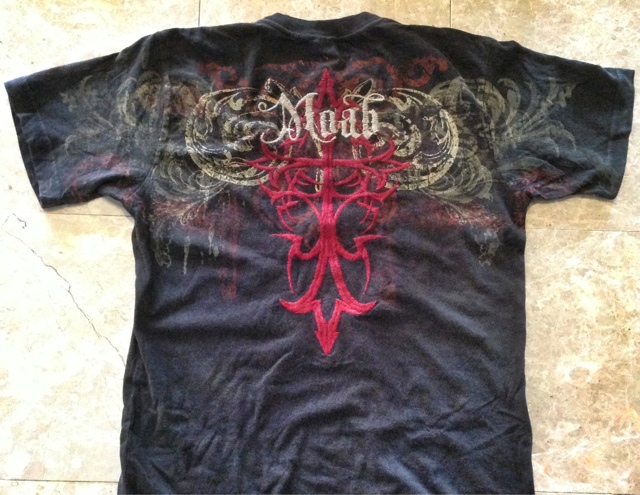When most merchandising professionals look at the bottom line, they shy away from using more than 1-2 mediums at a time. Case and point, the cost is what will drive their decision. Certainly I don’t blame those struggling in this economy to keep the profits high. Exploring every avenue of decorative abilities will always be dependent on the specific manufacturer’s abilities. In a nut shell, these limitations are what drives the price up. Yes, really. The manufacturer’s tool box and how efficiently they can use it, is the real determining factor here. Just because a screen print shop can print discharge, it doesn’t mean they can do it efficiently and offer it at a competitive price.
In the apparel decoration business combining these techniques add a value that no one can touch. Somehow a small company out of LA decided to print aggressive all-over prints with discharge on fabric panels, and then sew them together. This created the incontrovertible epitome of an oversized print. So how about we drag garments through mud, wing and rain, then add dye, acid wash, screen print, and why not embroidery to cap it all off. Is there value in that? There sure is if you do it right and don’t overload your techniques. Just like George Lucas said “A special effect without a story is a pretty boring thing.” A overly decorated garment with a weak campaign does not create value.
There are various forms of decoration from the simple inexpensive screen print to the complicated applique. The below photos are garments I've designed over the years with decoration technique directed by cost. They push the limits of costing to the brink of uncomfortable production expectations. It is at this comfort level where innovation and efficiency help you stay ahead of the game leading the industry instead of following the others. I'd say, in all confidence, this is how you know your company is staying ahead of the game.
The first piece below is a print utilizing a wrap pallet designed by Tad Hogensen of SanSegal in the late 1980's. 10+ years before the first winged pallet would arrive on the scene for mass production with an automatic. The wrap pallet is similar to a jacket pallet as a frame would hold down the outsides of the garment. Since the garment was not placed on the pallet as in traditional form, the edges needed to be held down. This design was a 3 hit process. The left side, then right side, then finally the 2 color center yinyang. It was then taken to the embroidery department where a large hoop and thick thread were utilized with a washaway backing. Believe it, only 13,000 stitches were required to stitch this file. WIth thread breaks it was about a 40 minute run on a 12 head.

It is the illusion that strikes fear into a merchandizing department when they look at a garment like this. The truth is the cost of this garment is less than $8 in a modern shop today. With the right crew, the right garment and a design focused on efficiency, this garment was being wholesaled at $15 and sold for $34.99 all day long.
Study your demographic, find out what makes them tick. You'd be surprised what happens when you put all the right elements into play.
The following piece is the same principle, but less cost as the garment was hit once across the sleeves. Only 2 colors were used.
The garments used here were enzyme washed purchased from Active Apparel. Stay tuned for an article on enzyme washing garments. I'll have to do a little research on chemicals before I suggest you atomize them in our atmosphere. I'm sure OSHA would have a few problems with an article that has everyone spraying chemicals into the air without proper ventilation and filtration devices.
